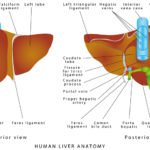If you’ve seen the movie Supersize Me, you might think you know all there is to know about the evil effects of gorging on fast-foods — but here’s yet another factor to consider. Researchers at the University of Toronto found potentially carcinogenic chemicals from food wrappers — the type of wrappers that burgers and subs come in, for instance — at high concentrations in the blood of all the subjects they tested.
Actually, what they discovered were chemicals called diPAPs (polyfluoroalkyl phosphoric acid diesters), and though scientists don’t know if diPAPs themselves are problematic, they do know that they quickly break down into PFOAs, which are the same chemicals used in Teflon and non-stain carpet and upholstery. Studies have linked PFOAs to liver cancer, pancreatic cancer, testicular cancer, neonatal death, hormonal disruption, infertility, and genetic mutations. And while PFOAs have been found at significant levels in the blood of 98 percent of all human subjects ever tested, as well as in the blood of animals at the farthest reaches of the earth (polar bears show high concentrations), this is the first study to isolate the presence of diPAPs in humans. The scientists believe that diPAPs may be responsible for at least 10 percent of the PFOA in human blood. So in addition to whatever unknown toxic impact diPAPs impart before degrading, the chemical certainly does impart toxicity once it breaks down into PFOA.
Industry uses the diPAP to grease-proof food wrappers, pizza boxes, microwave popcorn bags, candy wrappers, take-home doggie containers, fast-food bags and commercial food wrappers. It sticks to the surface of paper products, but apparently not permanently, given that the researchers found it not only in human blood, but also in sewage sludge, vegetables, and paper pulp, meaning that it’s undoubtedly getting out into the environment. Again, research doesn’t yet exist on the health effects of diPAPs on humans, but it doesn’t look good based on the fact that diPAPs belong to the same class of chemicals — perfluorochemicals — as PFOA and PFOS (another extremely toxic chemical).
One of the researchers, Scott Mabury, commented, “The take-home message is that some chemicals that make our lives easier, better, and more satisfying end up in our bloodstream with unknown toxicological consequences.” In other words, diPAP works well for its intended purpose, but while it keeps food juices from leaking onto your lap, it simultaneously leaks toxins into your blood.
Perhaps the most alarming concern is that, according to the scientists, when the diPAP breaks down, it produces molecules 10,000 times more toxic than the PFOA it becomes. As Dr. Madbury says, “In going from diPAPs to PFOA, you go through things that have been entirely ignored by essentially all of the academic research community. This is not something you want to be a common contaminant in humans. Certainly not at the concentrations it’s at.”
Even if you don’t care about diPAP and PFOA affecting you personally (or polar bears), here’s something to consider. A 2007 study found packaging PFOA in the blood of newborns — in fact, in every single one of the 299 samples analyzed. PFOA also has been found in crops, meaning that it’s likely in soil, and since it apparently doesn’t decompose in the environment, newborns for the foreseeable future also will come into the world full of the stuff. Oh yes, that also means that even if you don’t eat fast foods, avoid Teflon cookware, and live a very clean lifestyle, your body is still likely to be highly contaminated because of environmental contamination…which hardly seems fair.
Although the US Environment Protection Agency labeled PFOA a “likely” human carcinogen in January 2006, and while the EPA made an agreement with DuPont at the time to phase out all PFOA in products by 2015 — PFOA still is present in plenty of products. Plus, it sure looks like DuPont has been dragging its corporate feet in implementing the withdrawal of PFOA. Just a few months ago, the company somehow convinced the EPA that it needs a three-year extension on testing PFOA-related products before it can gear up the phase-out.
Richard Wiles, Executive Director of the Environmental Working Group, commented, “As long as [Dupont] can delay development of this data, that basically means that they don’t have to comply with the phase-out agreement.”
The way the so-called PFOA ban has been handled most likely foreshadows what will happen with diPAPs. After all, it was 2005 when the EPA first hit DuPont with the PFOA phase-out agreement, giving the company a 10-year implementation window. Way back in 2001, residents living near a Dupont plant in West Virginia sued the company for PFOA contamination, and the dangers of PFOA had been suspected long before that. In other words, talk of the dangers of PFOA has been bandied about for many years now and a ban still hasn’t been implemented. The scenario with diPAP will most likely be the same, with many years of expensive research and testing to be completed to find out if it’s really harmful before even talk of a ban dawns.
The message here is to avoid food in grease-proof wrappers as much as possible. But since toxic chemicals are virtually inescapable in the environment no matter where you live and no matter what you eat, you also need to detoxify your body regularly. As I wrote in my newsletter, “Inescapable Toxins,” exposure to toxins has indeed become inescapable. Now more than ever we must recognize that regular and continual detoxing has become a mandatory health protocol for everyone — not just an esoteric exercise for health fanatics.”
:hc












Perhaps the most alarming concern is that, according to the scientists, when the diPAP breaks down, it produces molecules 10,000 times more toxic than the PFOA it becomes.
YOU DID NOT SPECIFY WHAT MOLECULES IT PRODUCES, NOT NAMES AND NO RESEARCH TO BACK THAT STATEMENT UP. YOU INDICATE THAT THESE MOLECULES ARE BETWEEN THE diPAP and the PFOA.
Please advise,
Respectfully,
Charles Labianco
Charles, the cascade of
Charles, the cascade of breakdown products from diPAPs to PFOA and other carboxylates includes fluorotelomer alcohols. The toxicity of fluorotelomers to liver cells has recently been demonstrated by biochemist Jonathan Martin at the University of Alberta (Canada).
I live in New Zealand and wondering what you mean by grease-proof wrappers. Are they made of plastic or what kind of material. Thanks.
Alison:
We’re talking about the standard paper and cardboard wrappers that burgers, subs, sandwiches, and other fast foods come in. If you get some food that has grease or oil in it, and that oil doesn’t soak through the wrapper, then it’s treated. Try putting some oil on untreated paper and see how quickly it soaks through the paper.
I, too, am from New Zealand…Hawke’s Bay. With reference to Alison’s note does this also include baking paper? Many thanks .